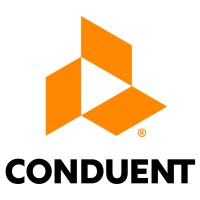Company Cyber Security Posture
NANA
NA Company Details
NA
NA
NA
NA
NA
NA
Scan still pending
NA
NA
Between 200 and 800
This score is AI-generated and less favored by cyber insurers, who prefer the TPRM score.
 NA Global Score
NA Global Score.png)

Company Scoring based on AI Models
| Model Name | Date | Description | Current Score Difference | Score |
|---|---|---|---|---|
| AVERAGE-Industry | 03-12-2025 | This score represents the average cybersecurity rating of companies already scanned within the same industry. It provides a benchmark to compare an individual company's security posture against its industry peers. | N/A | Between 200 and 800 |
Company Cyber Security News & History
| Entity | Type | Severity | Impact | Seen | Url ID | Details | View |
|---|
Company Subsidiaries

NA
Access Data Using Our API

Get company history
.png)
NA Cyber Security News
Cybersecurity breach at hedge fund manager Waratah may have exposed sensitive client data
Money manager told clients the incident may have impacted investor names, addresses, SINs, account numbers and other personal information.
Don’t fall for these 4 cybersecurity myths
Myth: Most hacking is the work of super genius computer nerds · Myth: Two-Factor Authentication Is a Waste of Time · Myth: VPNs Are Totally ...
Israeli-founded cyber startup set to be snapped up by Datadog in $1 billion deal
Upwind has developed a platform to protect businesses from malicious hackers by identifying risks and addressing their most critical ...
Employees Are Your Greatest Cybersecurity Asset
Openly sharing information about threats, near-misses, and situations where breaches have occurred. Open dialogue builds stronger defenses.
SharePoint hacking campaign affects hundreds of systems worldwide
The global hacking campaign linked to the ToolShell vulnerability in Microsoft SharePoint has compromised hundreds of systems across the globe, ...
Contract lapse leaves critical infrastructure cybersecurity sensor data unanalyzed at national lab
Data from sensors that detect threats in critical infrastructure networks is sitting unanalyzed after a government contract expired this weekend ...
Jim Cramer says buy these 2 cybersecurity stocks in the wake of Microsoft's attack
CNBC's Jim Cramer has long believed that cyber stocks are an essential part of investors' portfolios.
As AI tools take hold in cybersecurity, entry-level jobs could shrink
AI in cybersecurity is transforming team roles, reducing entry-level jobs while creating new opportunities and reshaping hiring priorities.
Agentic AI Turns Enterprise Cybersecurity Into Machine vs. Machine Battle
The first AI-driven preemptive cyber-defense has taken place. Now, corporate leaders may need to confront questions about agentic AI.

NA Similar Companies

Conduent
Conduent delivers digital business solutions and services spanning the commercial, government and transportation spectrum – creating valuable outcomes for its clients and the millions of people who count on them. We leverage cloud computing, artificial intelligence, machine learning, automation and

Sopra Steria
Sopra Steria, a major Tech player in Europe with 51,000 employees in nearly 30 countries, is recognised for its consulting, digital services and solutions. It helps its clients drive their digital transformation and obtain tangible and sustainable benefits. The Group provides end-to-end solutions to

TransUnion
TransUnion is a global information and insights company that makes trust possible in the modern economy. We do this by providing an actionable picture of each person so they can be reliably represented in the marketplace. As a result, businesses and consumers can transact with confidence and achiev

CDW
At CDW, we know how to make technology work so people can do great things. Our experts bring a full-stack, full-lifestyle approach with custom solutions, services and relationships to bring your vision to life. Through decades of experience, scale, and deep industry expertise, we deliver the full

Infinite Computer Solutions
Infinite is a global technology solution provider headquartered in Rockville, Md. The company provides business technology solutions and product engineering services for telecom, hi-tech, healthcare, media & entertainment, insurance, banking & financial services, retail, public sector, travel and tr

Ingram Micro
Ingram Micro is a leading technology company for the global information technology ecosystem. With the ability to reach nearly 90% of the global population, we play a vital role in the worldwide IT sales channel, bringing products and services from technology manufacturers and cloud providers to a h

Frequently Asked Questions
Explore insights on cybersecurity incidents, risk posture, and Rankiteo's assessments.
NA CyberSecurity History Information
How many cyber incidents has NA faced?
Total Incidents: According to Rankiteo, NA has faced 0 incidents in the past.
What types of cybersecurity incidents have occurred at NA?
Incident Types: The types of cybersecurity incidents that have occurred include .
Additional Questions
What Do We Measure?
















Every week, Rankiteo analyzes billions of signals to give organizations a sharper, faster view of emerging risks. With deeper, more actionable intelligence at their fingertips, security teams can outpace threat actors, respond instantly to Zero-Day attacks, and dramatically shrink their risk exposure window.
These are some of the factors we use to calculate the overall score:
Identify exposed access points, detect misconfigured SSL certificates, and uncover vulnerabilities across the network infrastructure.
Gain visibility into the software components used within an organization to detect vulnerabilities, manage risk, and ensure supply chain security.
Monitor and manage all IT assets and their configurations to ensure accurate, real-time visibility across the company's technology environment.
Leverage real-time insights on active threats, malware campaigns, and emerging vulnerabilities to proactively defend against evolving cyberattacks.




